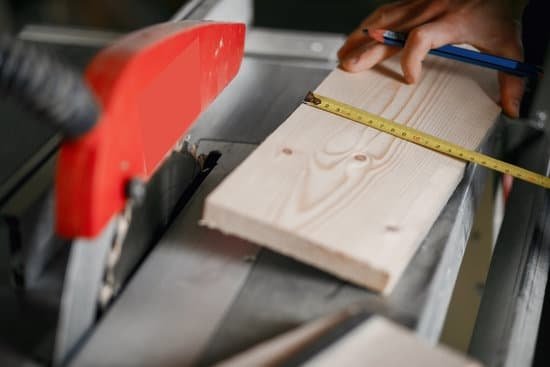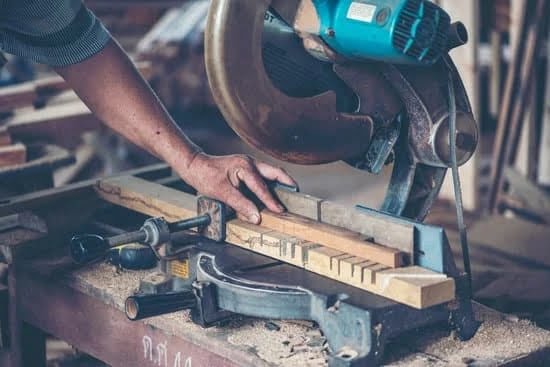Are you a budding woodworker looking to embark on a do it yourself woodworking shop? From setting up your space and workbench to essential tools and safety practices, there’s so much to consider when creating your own DIY woodworking haven. In this article, we’ll explore the benefits of having a DIY woodworking shop, provide tips on setting up the space, offer project ideas, and delve into advanced techniques.
Starting your own do it yourself woodworking shop comes with numerous benefits. Not only do you have the freedom to create and customize your ideal workspace, but you also have the opportunity to hone your skills and unleash your creativity. Whether you’re a beginner looking for simple projects or an experienced woodworker aiming to take things to the next level, having your own dedicated woodworking shop can truly elevate your craft.
When it comes to setting up your space, there are several factors to consider. From choosing the right location (garage, basement, or dedicated shed) to selecting essential tools and equipment, we’ll guide you through everything you need to know for creating a functional and efficient DIY woodworking shop.
And let’s not forget about safety – we’ll also cover must-have safety gear and practices to ensure that you can enjoy woodworking without any unnecessary risks. So grab your hammer and let’s get started on this exciting journey of crafting in your very own do it yourself woodworking shop.
Setting Up Your DIY Woodworking Shop
When it comes to setting up your own do it yourself woodworking shop, having the essential tools and equipment is crucial. Whether you are a beginner or an experienced woodworker, having the right tools can make all the difference in the quality of your work. From measuring and cutting to shaping and finishing, here are some essential tools and equipment that every DIY woodworking shop should have.
Measuring and Cutting Tools
One of the most basic yet essential tools for any woodworking shop is a good set of measuring and cutting tools. This includes items such as a tape measure, combination square, marking gauge, hand saws, circular saws, jigsaw, and table saw. These tools will allow you to accurately measure and cut wood to the desired dimensions for your projects.
Shaping and Joinery Tools
In addition to measuring and cutting tools, shaping and joinery tools are also essential for any DIY woodworking shop. These include items such as a power drill, chisels, wood router, planer, jointer, and biscuit joiner. These tools will allow you to shape and join wood pieces together to create intricate designs and sturdy structures for your projects.
Sanding and Finishing Tools
Lastly, having the right sanding and finishing tools is crucial for achieving a smooth and professional-looking finish on your woodworking projects. Key items in this category include a random orbital sander, belt sander, hand sanding blocks, wood stain or paint, varnish or polyurethane finish, brushes or applicators. With these tools at your disposal, you can ensure that your projects have a polished look before they leave your DIY woodworking shop.
Choosing the Right Space for Your DIY Woodworking Shop
When it comes to setting up your own DIY woodworking shop, one of the key decisions you’ll need to make is choosing the right space for your endeavors. The location you choose will have a significant impact on your ability to work comfortably and efficiently, as well as on the types of projects you can take on. Let’s explore the benefits and considerations of using a garage, basement, or dedicated shed for your woodworking shop.
Garage
Many DIY enthusiasts opt to set up their woodworking shop in the garage due to its convenience and accessibility. A garage provides ample space for tools, equipment, and workbenches, making it an ideal location for those with a passion for woodworking. However, garages are also commonly used to store vehicles and household items, so proper organization and storage solutions are essential to ensure that your woodworking space remains functional.
Basement
For those who have a basement with sufficient space, this can be an excellent option for a DIY woodworking shop. Basements often offer a more controlled environment in terms of temperature and humidity, which can be beneficial when working with wood. Additionally, being located below ground level means that noise from power tools is less likely to disturb others in the household. However, basements may require additional ventilation and lighting upgrades to create a safe and comfortable working environment.
Dedicated Shed
If you have the available outdoor space, building or repurposing a shed into a dedicated woodworking shop can offer numerous advantages. A separate structure provides insulation from distractions and household noise while allowing you to customize the layout and design of your workspace.
Furthermore, having a separate building ensures that dust and debris from woodworking projects don’t spread throughout the home. However, building or renovating a shed may require additional time and resources compared to utilizing an existing indoor space.
Ultimately,{” “}choosing the right space for{” “}a do it yourself woodworking shop{” “}will{” “}depend on{” “}your{” “}specific needs,{” “}and each option has its own set of considerations{” “}. By weighing factors such as available space,{” “}comfort,{” “}and{” “}accessibility,{” “}you{” “}can{” “}determine which location will best suit{” “}your hobby or business needs.
Building Your Own Workbench
When it comes to setting up your own do it yourself woodworking shop, one of the most crucial elements is having a sturdy and functional workbench. This is where the majority of your woodworking projects will come to life, so it’s important to invest the time and effort into creating a work surface that meets your specific needs. There are various factors to consider when building your own workbench, including size, material, and features.
The first step in building your own workbench is determining the appropriate size for your space and projects. Consider the dimensions of your woodworking shop and the types of projects you will be working on. If you have limited space, a smaller workbench with wheels for mobility might be ideal. However, if you have plenty of room, a larger, stationary workbench may better suit your needs.
Next, think about the materials you want to use for constructing your workbench. Many woodworkers opt for a solid hardwood such as maple or oak for the bench top due to its durability and resistance to wear and tear. Additionally, consider using heavy-duty steel or cast iron for the base to provide strength and stability.
Finally, consider any additional features you’d like to incorporate into your workbench design. This could include built-in storage options such as drawers or shelves, vises or clamps for securing projects, or even built-in power outlets for easy access to electricity.
| Workbench Material | Features |
|---|---|
| Solid hardwood (maple or oak) | Built-in power outlets |
| Heavy-duty steel or cast iron | Built-in storage options (drawers or shelves) |
Organizing Your DIY Woodworking Shop
Organizing a DIY woodworking shop is crucial for efficiency and safety. A well-organized space allows woodworkers to easily find tools and materials, ultimately saving time and reducing frustration. Below are some essential storage solutions to consider when setting up your do it yourself woodworking shop:
- Tool Storage: Invest in a sturdy tool cabinet or pegboard system to keep your hand tools organized and easily accessible. Consider labeling the storage spaces to ensure everything is returned to its proper place after use.
- Lumber Storage: Keep your lumber off the ground and neatly stored to prevent warping or damage. Vertical lumber racks or horizontal shelving units can help you keep different types of wood separated and easily visible for project planning.
- Hardware Organization: Small hardware like screws, nails, and bolts can quickly become chaotic if not properly organized. Utilize small parts organizers, stackable bins, or drawer systems to keep hardware sorted by size and type.
In addition to these storage solutions, consider implementing a label maker to clearly mark the contents of various storage containers. This will help you locate items with ease when starting a new project.
Proper organization doesn’t just make your work area look nice; it also helps keep you safe. A tidy workspace reduces the risk of trips, falls, or injury from sharp objects lurking in cluttered areas. By taking the time to plan out your organization system, you’re not only creating an efficient workspace but also promoting a safer environment for woodworking activities.
Remember that proper organization is an ongoing process. Regularly assess your storage needs and adjust as necessary as your collection of tools, supplies, and materials grows. With these tips in mind, you’ll be well on your way to creating a truly functional do it yourself woodworking shop.
Safety First
When it comes to establishing a do it yourself woodworking shop, safety should always be the number one priority. Before diving into any woodworking project, it’s essential to have the right safety gear on hand. This includes items such as safety goggles, ear protection, a dust mask, and sturdy work gloves. These items will help protect you from potential hazards such as flying debris, loud noises, harmful dust particles, and splinters.
In addition to having the proper safety gear, there are also essential safety practices that should be followed in a DIY woodworking shop. One of the most important practices is to always keep your work area clean and organized.
A clutter-free workspace reduces the risk of accidents and makes it easier to navigate around sharp tools and heavy machinery. It’s also crucial to always use tools and equipment according to their intended purpose and never take shortcuts that could compromise safety.
Finally, practicing proper tool maintenance is another key aspect of safety in a do it yourself woodworking shop. Keeping tools clean, sharp, and in good working condition not only ensures better results in your woodworking projects but also reduces the risk of accidents caused by malfunctioning equipment. By prioritizing safety gear and practices in your DIY woodworking shop, you can enjoy woodworking with peace of mind knowing that you’re taking necessary precautions to protect yourself from potential hazards.
With these essential safety measures in place, you can create an environment within your DIY woodworking shop that allows for creativity and productivity while minimizing risks. Remembering to prioritize safety at all times will ensure that you can fully enjoy the satisfaction of creating with wood without compromising your well-being. So take the time to invest in high-quality safety gear and consistently practice safe habits – your future self will thank you for it.
DIY Woodworking Projects for Beginners
For those who are new to the world of woodworking, embarking on simple and fun DIY projects is a great way to get started. There are numerous benefits to starting with beginner-level projects in a do it yourself woodworking shop, including gaining confidence in your abilities, learning fundamental techniques, and creating practical items for personal use or as gifts for others.
To begin your woodworking journey, consider starting with some of these easy and enjoyable projects:
- Wooden Picture Frames: Constructing your own picture frames allows you to customize the size and design to perfectly showcase your favorite photos or artwork.
- Basic Shelving Units: Building simple shelves for storage or display purposes is an excellent way to practice measuring, cutting, and assembly skills.
- Tool Tote: Crafting a wooden tool tote provides a functional and stylish solution for keeping hand tools organized and easily accessible in your workshop.
As you tackle these beginner projects, focus on honing your skills in using essential woodworking tools such as saws, drills, sanders, and clamps. Pay attention to safety practices at all times and take the opportunity to explore different types of wood and their characteristics. As confidence grows from successfully completing these initial projects, you can then progress to more challenging endeavors.
Remember that patience and perseverance are key virtues when it comes to mastering woodworking techniques. With each project completed in your do it yourself woodworking shop, you will gain valuable experience that will prepare you for more advanced woodworking ventures in the future.
Advanced Woodworking Techniques
For those who have mastered the basics of woodworking, it may be time to take your skills to the next level. Advanced woodworking techniques allow for more intricate and detailed projects that can truly showcase your craftsmanship and creativity. From joinery methods to decorative techniques, there are many ways to elevate your woodworking abilities.
One advanced technique that can take your DIY woodworking shop to a new level is hand-cut dovetail joints. These joints are not only strong and durable but also add a beautiful touch of craftsmanship to your projects. Learning how to cut these joints by hand requires precision and practice, but the end result is well worth the effort.
Another advanced woodworking technique to consider is inlay work. Inlay involves incorporating contrasting materials, such as wood, metal, or even stone, into the surface of a piece. This adds ornamental detail and visual interest to your projects, making them stand out as unique works of art. With patience and attention to detail, inlay work can become a signature element of your woodworking style.
For those interested in adding another dimension to their woodworking projects, carving is an advanced technique that can truly set your work apart. Whether you choose relief carving, which adds depth and texture to a flat surface, or sculptural carving, which creates three-dimensional forms from wood blanks, carving allows for endless creative possibilities in your projects.
| Advanced Technique | Description |
|---|---|
| Hand-Cut Dovetail Joints | This technique adds strength and aesthetic appeal to woodworking projects. |
| Inlay Work | Incorporating contrasting materials into the surface of a piece for visual interest. |
| Carving | Adds depth and creativity through relief or sculptural carving techniques. |
Conclusion
In conclusion, setting up a do it yourself woodworking shop can be an incredibly satisfying and fulfilling endeavor. Not only does it provide a space for you to unleash your creativity and hone your woodworking skills, but it also offers a sense of accomplishment that comes with creating something from scratch. Whether you are a beginner or more experienced woodworker, having a dedicated space for your projects allows you to fully immerse yourself in the craft.
The benefits of having a DIY woodworking shop extend beyond just the joy of creating. It also provides a practical and functional space for all your woodworking needs, from building workbenches to organizing tools and materials. By carefully choosing the right tools, equipment, and storage solutions, you can maximize both the efficiency and enjoyment of your woodworking projects.
Ultimately, embracing the satisfaction of creating in your do it yourself woodworking shop means taking pride in every finished project, no matter how big or small. From simple beginner projects to advanced woodworking techniques, having a dedicated space to work on these endeavors allows you to continually challenge yourself and grow as a woodworker.
The sense of accomplishment that comes with each completed project is truly unmatched – making the investment in setting up your own DIY woodworking shop well worth it.

Hi everyone! I’m a woodworker and blogger, and this is my woodworking blog. In my blog, I share tips and tricks for woodworkers of all skill levels, as well as project ideas that you can try yourself.





